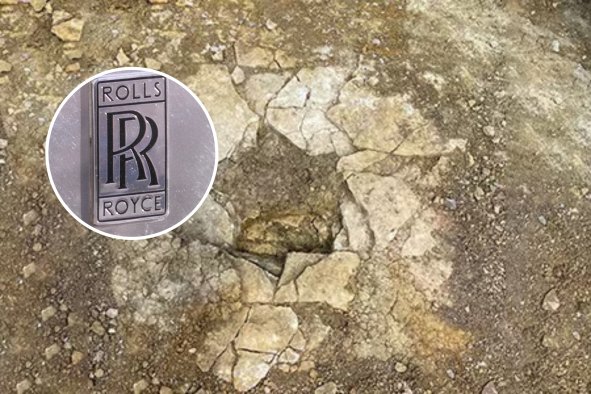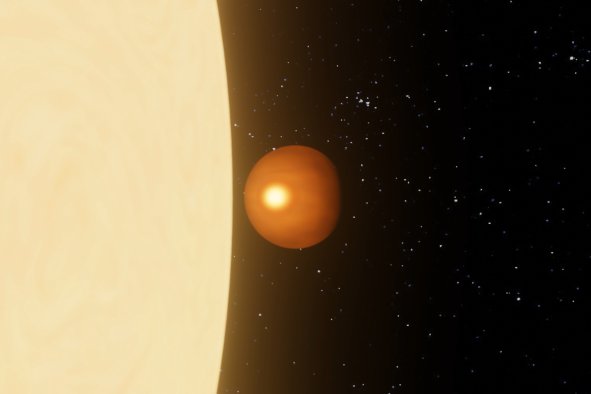The discovery of a strange wobbling planet has left astronomers confused but could reveal the secrets of planet formation.
The new exoplanet, named TOI-1408 c, is situated about 455 light-years from our solar system and orbits its star in a bizarre shimmying waltz with another planet, according to a new paper in The Astrophysical Journal Letters.
TOI-1408 c seems to vary in the length of time it takes to orbit its star, TOI-1408, and also orbits within the orbit of another planet previously known to exist around the star, a "hot Jupiter" named TOI-1408 b.
"The small planet exhibits very unusual orbital behavior and shows considerable variations regarding the time when it passes in front of its star, which is something that we don't see as a rule. The small planet's existence challenges existing theories on the formation and stability of planetary systems," said study co-author Judith Korth, an astrophysicist at Sweden's Lund University, in a statement.
The newly discovered planet is about eight times the mass of Earth and orbits the star very close to the previously discovered TOI-1408 b. The time taken by these two planets to orbit their star appears to be a 2:1 ratio, with the outer planet taking nearly exactly twice as long to orbit as the newly discovered inner planet.
Astronomers can observe planets from Earth by watching them crossing across the face of the star. But TOI-1408 c appears to vary in the length of time it takes between transits, known as transit timing variations (TTVs), as well as the length of time it takes to cross its star, or transit duration variations (TDVs).
"The TTV amplitude for TOI-1408 c is 15 percent of the planet's orbital period, marking the largest TTV amplitude relative to the orbital period measured to date," the researchers wrote in the paper.
These variations may arise due to the 2:1 orbital ratio with the other planet, the researchers suggest.
"The planets are near a 2:1 period commensurability with librating resonant arguments, yet both remain outside the resonant configuration. This configuration leads to remarkable TTVs and TDVs, with TOI-1408 c exhibiting the largest TTV amplitude relative to its orbital period recorded thus far," the researchers wrote.
The researchers also suggest that there may be a third planet in the system that they haven't yet spotted and that could be contributing to these variations in transit time and duration.
"The system's dynamic nature and the likely presence of a third body invite further observational campaigns to refine the orbital parameters and investigate long-term stability," the researchers wrote.
They continued: "This research not only deepens our understanding of multiplanet systems involving hot Jupiters with inner low-mass companions but also underscores the need for continued exploration to uncover the diverse architectures of exoplanetary systems."
The hope is that these findings of how a larger planet and a smaller planet interact will help astronomers understand planet formation in greater detail.
"Our results will help researchers to learn more about how planets are formed and how they behave when they are very close to each other, particularly in systems with giant planets," Korth said.
"I hope that our results can be used in future studies to discover even more planets in other systems, but also to better understand the large range of planetary systems that exist in our galaxy," she said.
Do you have a tip on a science story that Newsweek should be covering? Do you have a question about exoplanets? Let us know via science@newsweek.com.
Reference
Korth, J., Chaturvedi, P., Parviainen, H., Carleo, I., Endl, M., Guenther, E.W., Nowak, G., Persson, C.M., MacQueen, P.J., Mustill, A.J., Cabrera, J., Cochran, W.D., Lillo-Box, J., Hobbs, D., Murgas, F., Greklek-McKeon, M., Kellermann, H., Hébrard, G., Fukui, A., Winn, J.N. (2024). TOI-1408: Discovery and Photodynamical Modeling of a Small Inner Companion to a Hot Jupiter Revealed by Transit Timing Variations. The Astrophysical Journal Letters, 971(2), L28. https://doi.org/10.3847/2041-8213/ad65fd
Disclaimer: The copyright of this article belongs to the original author. Reposting this article is solely for the purpose of information dissemination and does not constitute any investment advice. If there is any infringement, please contact us immediately. We will make corrections or deletions as necessary. Thank you.



